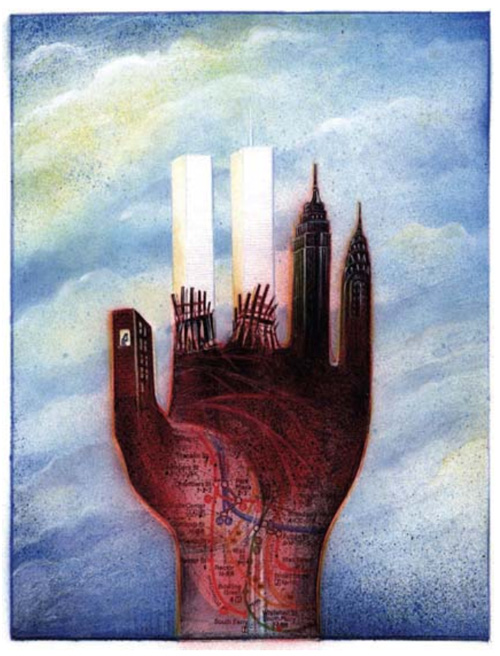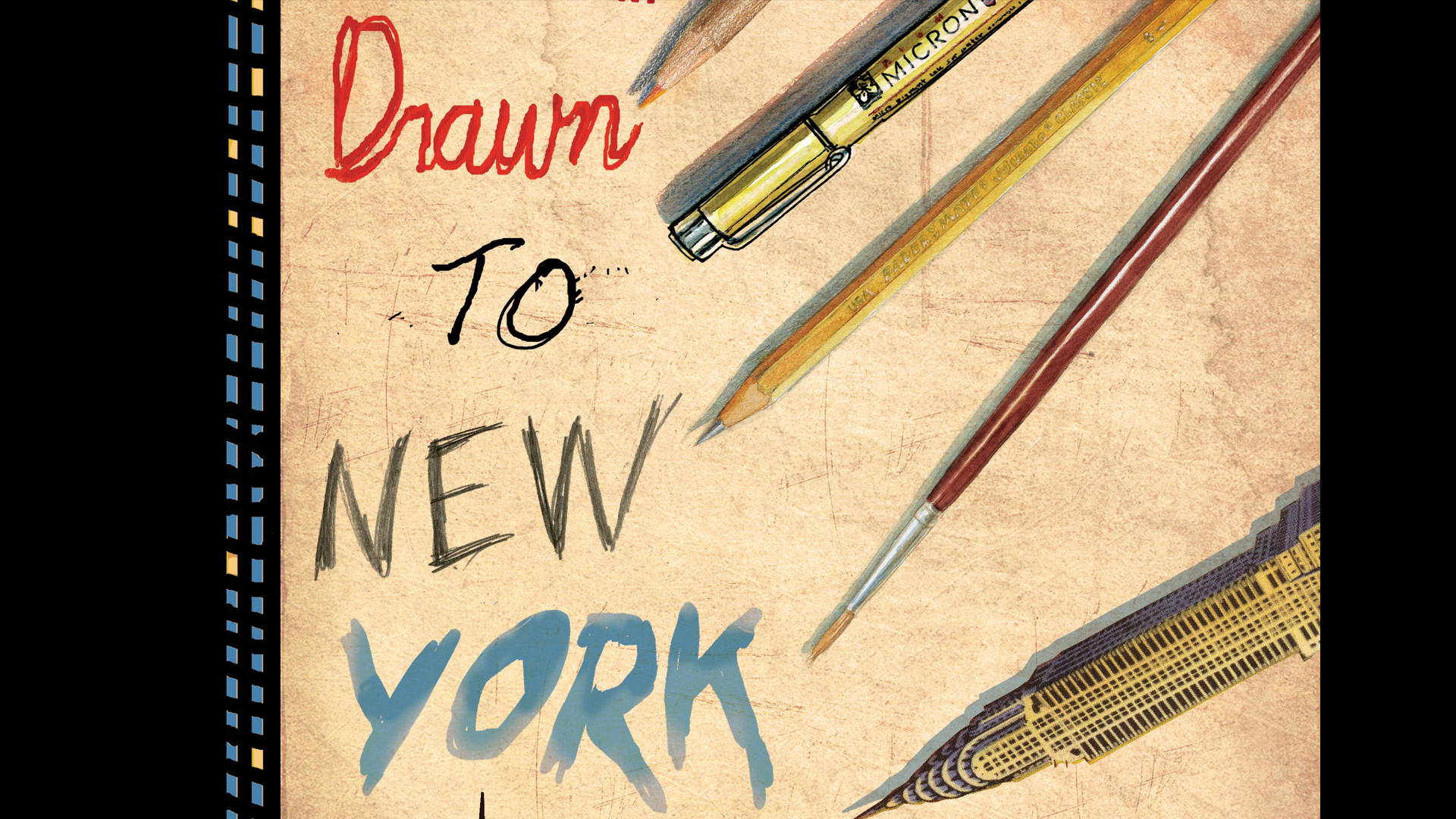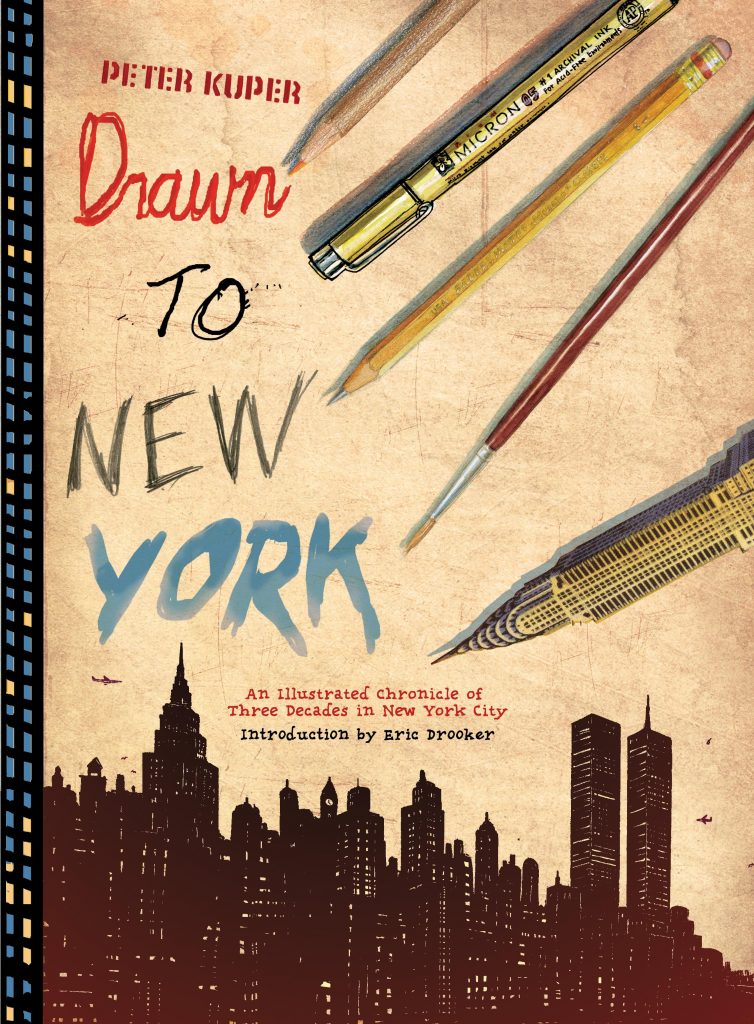by Maria Popova
Brain Pickings
October 2013
New York City isn’t wont for love letters (and, okay, the occasional hate mail and breakup letter) – from the illustrated to the poetic to the cartographic to the photographic to the literary, and even the canine and the feline. And if this tells us anything, it’s that the ultimate portrait of the city is a collage of a myriad subjective impressions and private experiences. In Drawn to New York: An Illustrated Chronicle of Three Decades in New York City (public library), celebrated illustrator and counterculture cartoonist Peter Kuper contributes his own, which he calls a “portrait of this city I love, both its darkness and light Š a city whose story is ever being written.”
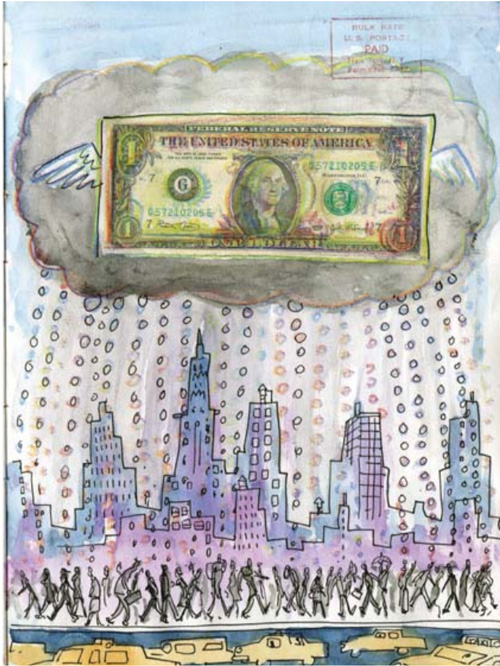
In the introduction, painter and graphic novelist Eric Drooker – who contributed to some of Gotham’s dystopian dreams – ponders the city’s enduring, ineffable mesmerism:
Like moths to a flame, millions are drawn to New York… but why?
What’s the attraction to the big city – the eternal Babel – with its endless confusion of tongues? What’s all the hubbub?
What is it that draws so many people – particularly artists – to Gotham?
Is it the buildings? The lights? The sound? The fury?
The wailing sirens at 3 A.M.? The incessant rumble of nonstop express trains on rusted subway tracks?
Or is it simply the seduction of anonymity in the big city… a chance to reinvent oneself in the rush hour crowd?
Many come as a career move, hoping to be discovered by others… or at least to find themselves.
Many self-appointed New Yorkers, of course, can only connect the dots of how and why we ended up in city, as Steve Jobs poignantly noted of life’s general dot-connecting in his timeless Stanford commencement address, by looking back and never by looking forward. When Kuper packed his own midwestern bags at the age of eighteen to make Gotham his adopted home, he had just an abstract sense of why the city – vertical, gridded, stark – drew him. Only decades later would he capture this abstraction in the concrete, stark grids of his cartoon strips and graphic novels.
Dazzled by the city’s glamor on a childhood visit – with his family, at the age of nine, to see his uncle perform on Broadway – young Kuper also witnessed the inevitable sight of New York’s gruffness, involving a gas truck, a drunk man in a Pontiac, a cacophony of blaring horns, and his father leaping into action to save the drunk from an inevitable explosion. That experience shaped his entire understanding of the city. Kuper recalls:
Clearly New York was a dangerous place where terrible things could happen, but also a place that could turn ordinary people into superheroes. On that sweltering August night, amid the roaring swirl of Manhattan’s manic energy, I decided I wanted to move to this city as soon as possible.
It took him a decade, but in June of 1977, he set fateful foot on Gotham soil at Grand Central, set on becoming a New York animator. The city he arrived in – bankrupt, with decrepit subways, a ghostly Times Square at night, and streets lined with towers of uncollected trash from a garbage strike – sounds to the onlooker almost nightmarish, a nightmare made all the grimmer by the famous Blackout that hit only a month later, unleashing rampant looting. But Kuper was in heaven, living his dream.
That, perhaps, is the sign of a great New Yorker, and especially a great New York artist: The ability to love the city not despite its grit but because of it, to inhabit its struggles with dignity rather than disgust, with empathic curiosity rather than cruel gawking. And that is precisely what Kuper has been doing for thirty years in his drawings of the city at its most real yet its most affectionate, and above all its comforting mutability. Kuper himself puts it beautifully:
This city is change. That’s its glory – it’s a perpetually unfinished canvas, offering up possibility to each successive wave of artists.
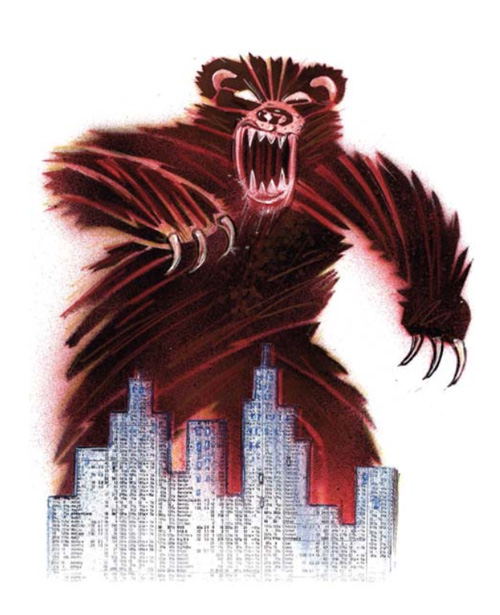
Though
all of Kuper’s work is remarkably dimensional, brimming with social,
cultural, and political commentary, among his most striking pieces is
this irrepressibly unsettling, viscerally disquieting image of the raw,
debilitating trauma that 9/11 inflicted on the city…
